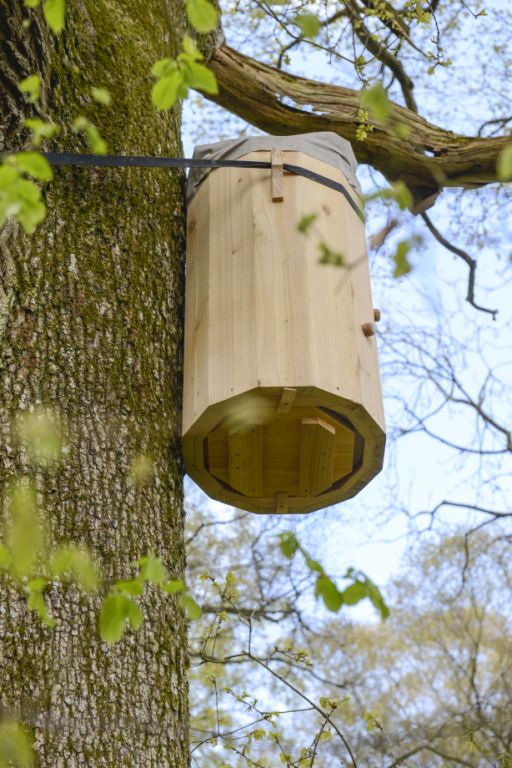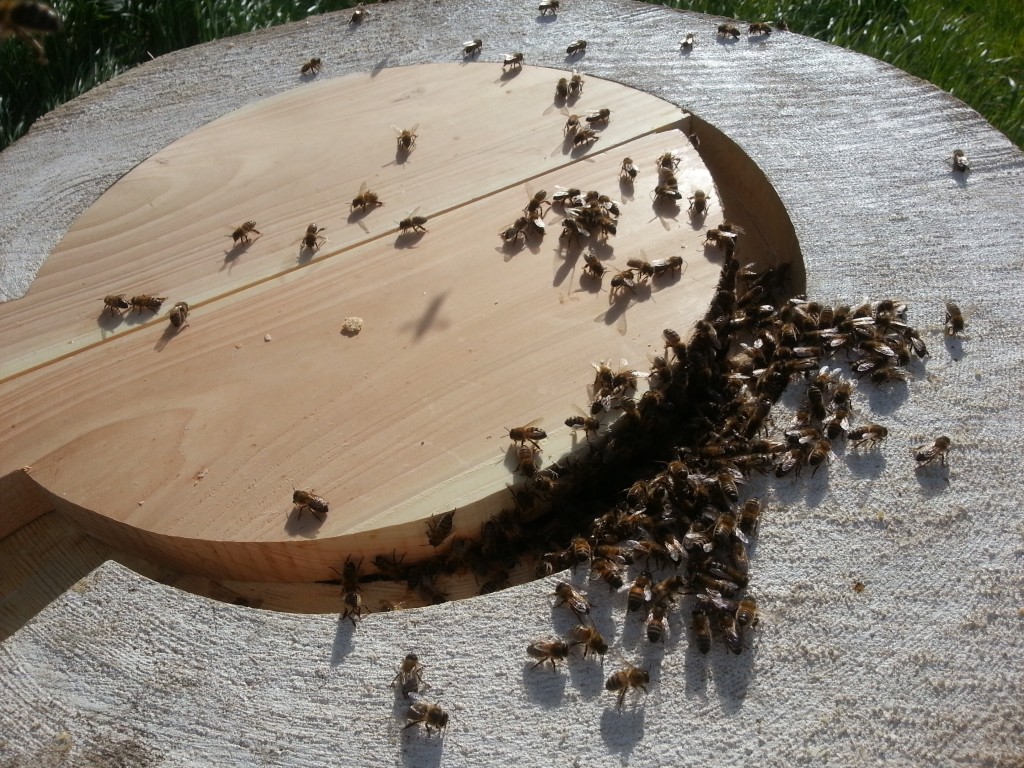Here is a short clip in real time of a swarm moving into a hive. I had set the hive in an ash tree approximately 5m above the ground at the beginning of April. Nothing happened until July… two days after I had put some more lemon grass oil in the entrance.
This swarm moved into the hive mid-July. I revisited in early October and was amazed by what I saw. As it was so late in the season, I wasn’t expecting to see much growth, but the colony had now expanded to half of the hive.























